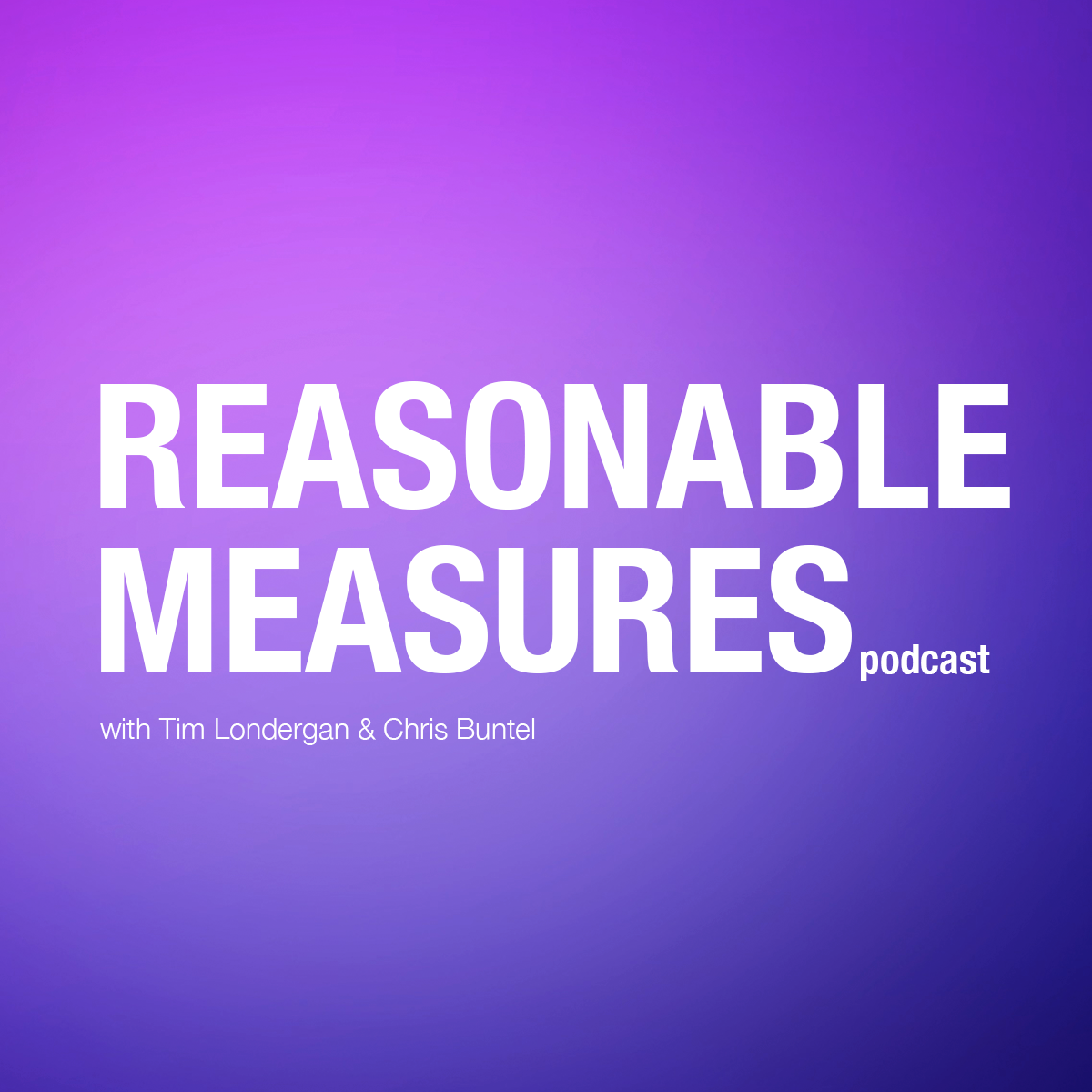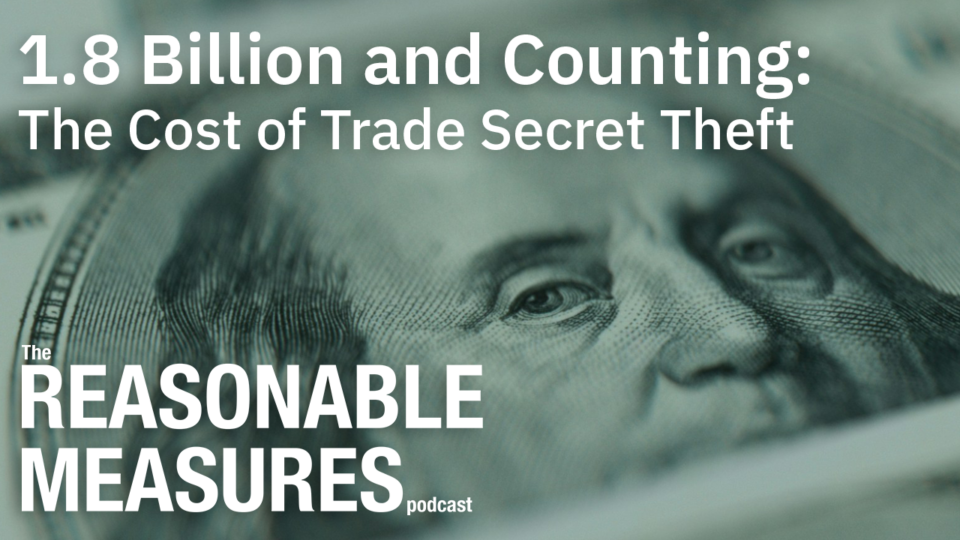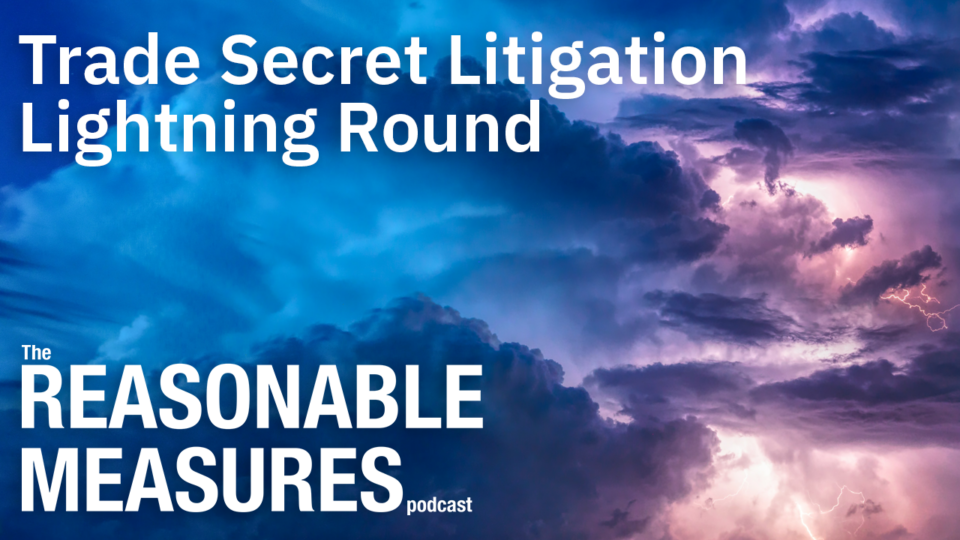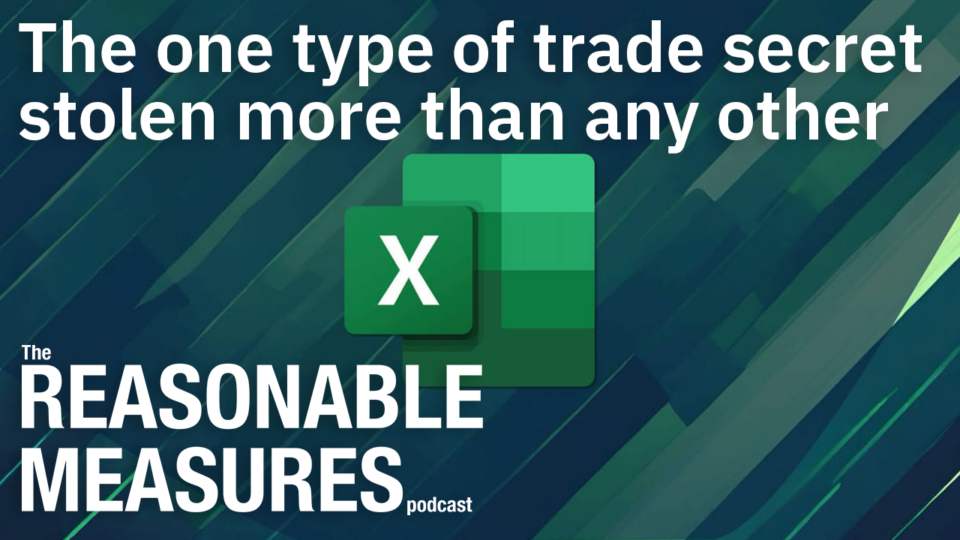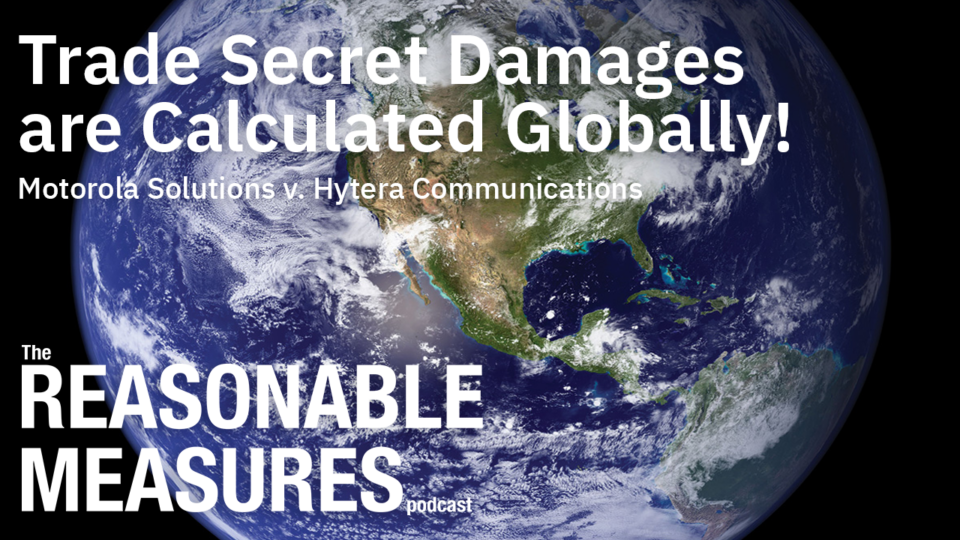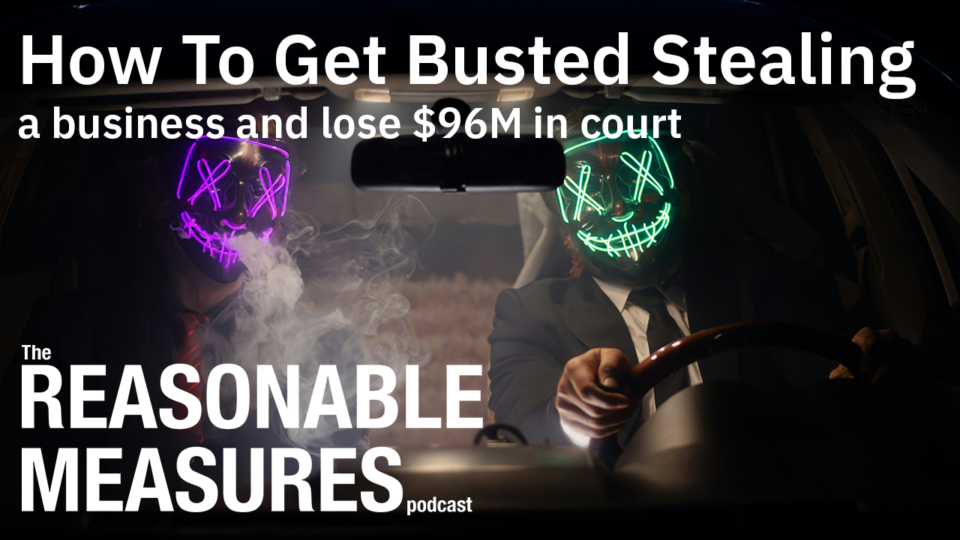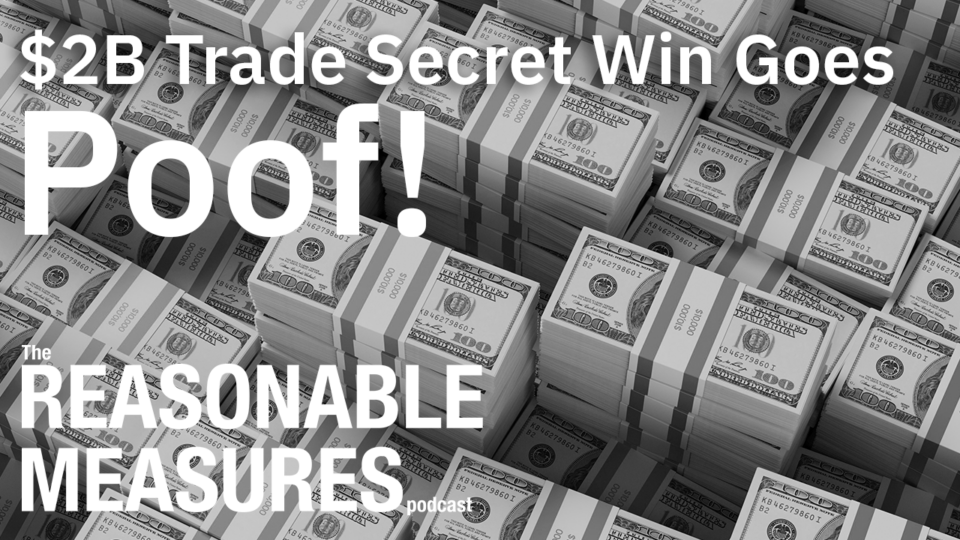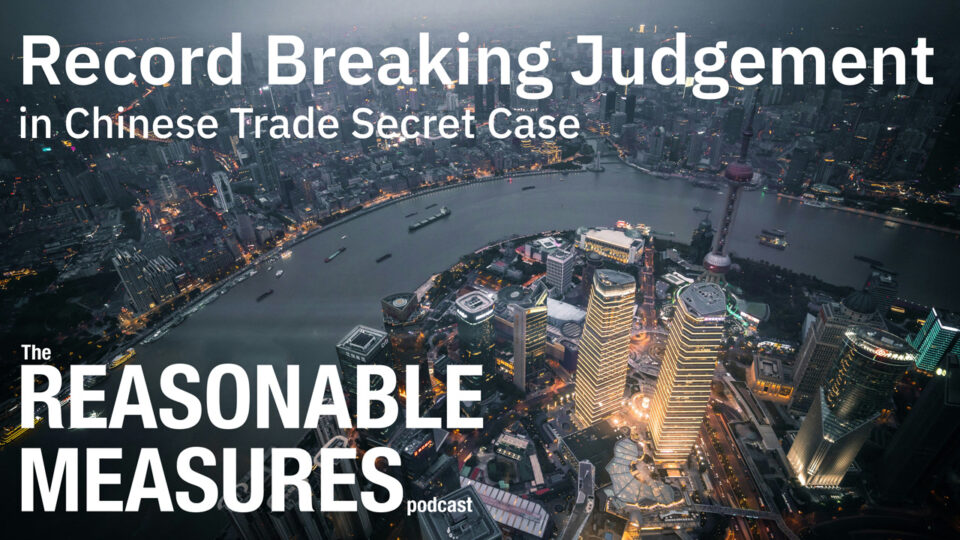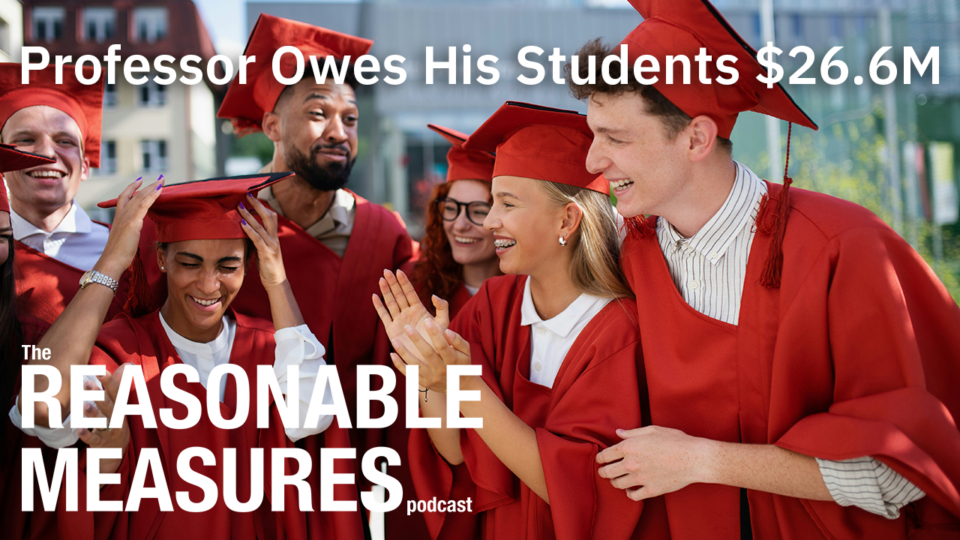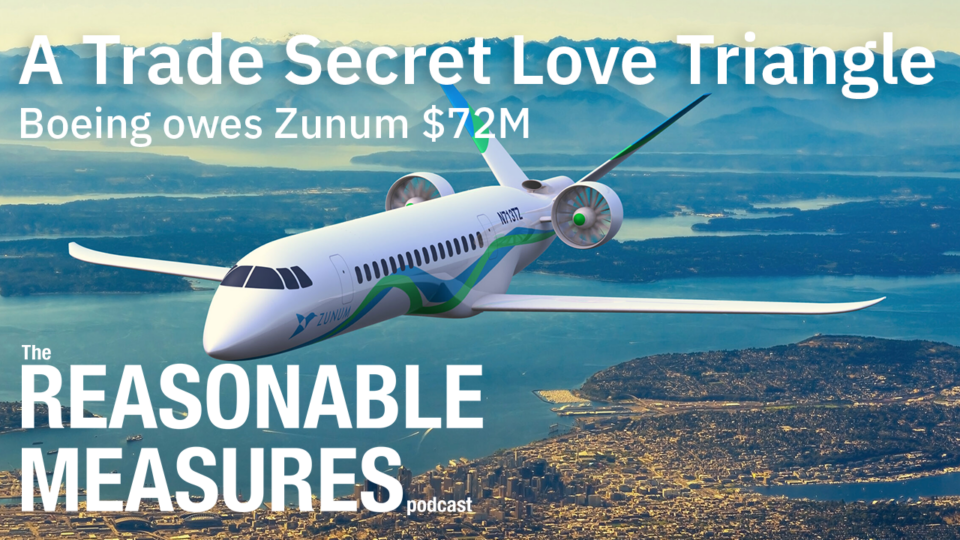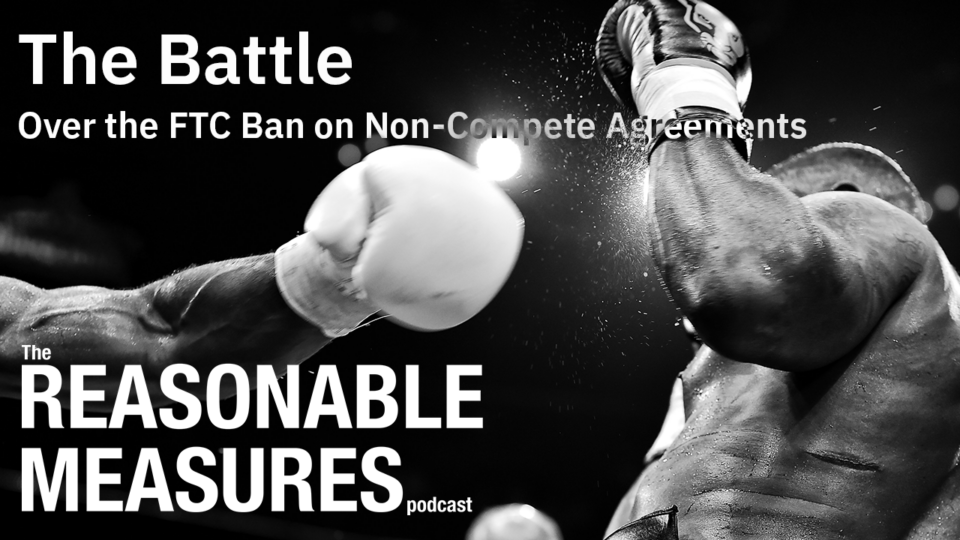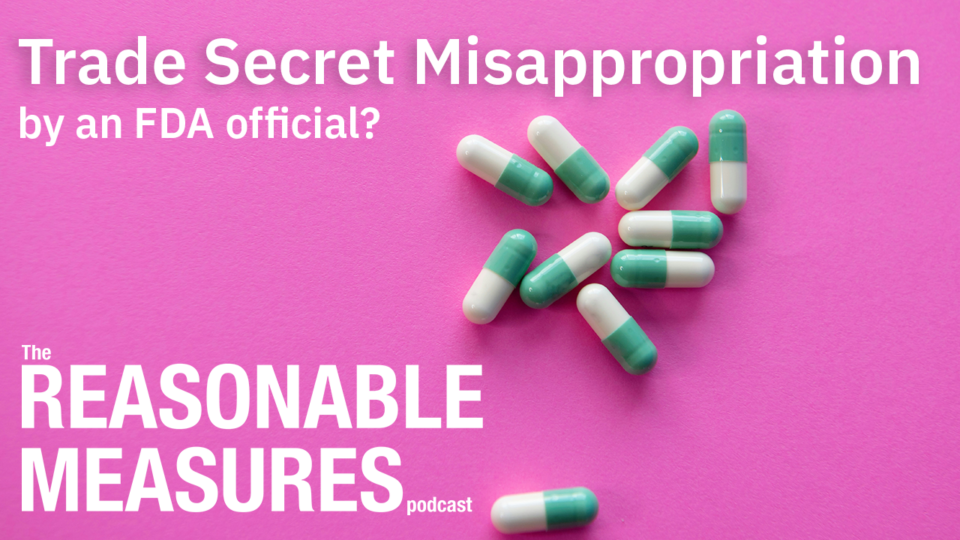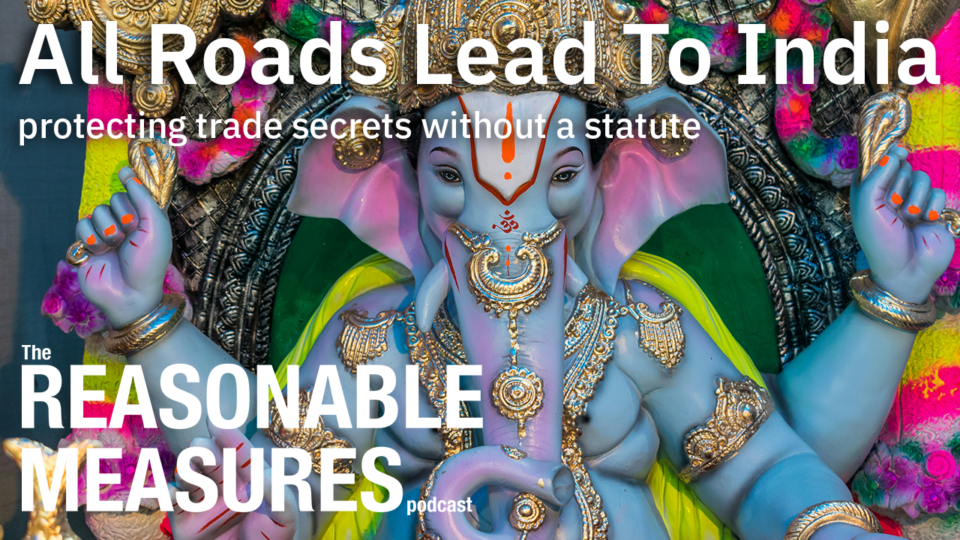In this episode of Reasonable Measures, Tim and Chris explore how artificial intelligence (AI) is colliding with intellectual property (IP) law, particularly focusing on copyrights, patents, and trade secrets. They highlight legal challenges around whether AI can be considered an “inventor” or “author,” and revisit the well-known “monkey selfie” case as a precedent for non-human creations. As AI-generated outputs become more sophisticated, traditional IP frameworks are being tested. The conversation also touches on the value of trade secrets in protecting AI models, especially when patents are either too slow or publicly revealing.
要点
- AI-generated content is not copyrightable because U.S. copyright law requires human authorship.
- The “monkey selfie” case is a useful analogy: since a monkey took the photo, no one could claim copyright just like with AI-generated images.
- AI cannot legally be named an inventor in a patent, which complicates protection for AI-generated inventions.
- Fair use doctrine is under legal pressure as courts increasingly say AI companies must license copyrighted material for model training.
Trade secrets are the most effective protection for AI model architecture, data handling, and tuning methods—especially given their evolving nature and speed of development.
Transcript:
Tim (00:13): Number 14, Chris, we’re back.
Chris (00:16): Hey, Tim.
Tim (00:17): Reasonable measures. Do you like that name still? I used to love the name. I’m not sure I love it anymore.
Chris (00:21): I still love it. It’s a great name.
Tim (00:23): You still love it. Okay. I guess that’s you went to law school, man. I guess it makes sense that you love it. All right. Well, I’ll deal with it. Okay. Today we’re going to talk about, well, we’re going to weave trade secrets in, but we’re really going to be talking a lot about copyrights.
Tim (00:40): I think where this discussion started when you proposed this idea was the idea that copyrights or sorry, AI cannot be an inventor, right? So let’s kind of start there because I think that’s kind of the root of what we’re going to talk about today. So talk about that in terms of patent law and copyright law and decisions that have happened.
Chris (01:07): Well, and it’s really even more fundamental. So the thought behind this topic was that people are creating these AI models and AI tools that can do amazing things. And part of that is when it does create something amazing, you want to be able to protect it. And what we’re finding and what courts and statutes around the world are finding is that traditional ways of protecting things like new inventions or new artistic creations or even code don’t work so well in the AI context. So it’s really forcing people to rethink what kind of protection tools are even available in the first place. Because again, a lot of them that traditionally you’d use no longer are working the way that people want them to. So it’s an interesting time in the field right now. You have these amazing tools that you’ve developed, spent time and money, and they can solve problems and then come up with a lot of amazing things. But without protection, it’s very difficult to commercialize them. So that was really the genesis of this conversation.
Tim (02:23): Okay, so I’m going to try and break this down real quick. Yeah. Three buckets in my mind. There’s model training, right? So creating the AI itself. There’s invention or problem solving using the AI and that manifests itself in something, right? That third bucket of manifestation, I guess, could be whatever—could be an image, could be a new formula, could be whatever.
Chris (02:54): Could be music, could be a screenplay or a television show, could be many, many different valuable creations that historically were made by people. People would spend time and effort to do these. But now with AI, AI can make something similar or identical. So it’s really this challenge of, what do you do? How do you deal with that situation?
Tim (03:13): Okay, so go backwards then to say in the old days, back when people used to paint, you know, brush and stuff, that would be a copyrighted work, right? So if I wanted to reproduce, you know, a Van Gogh, I should be paying some sort of a license fee to, you know, the Van Gogh estate or something.
Chris (03:23): That’s right. So, you know, there’s lots of copyrighted things like, you know, if you wrote a song for music, if you painted something, did a sculpture, you know, wrote a screenplay for the next big movie, all of those things, traditionally, you would protect with copyright law and it would work well. Copyright law was designed to protect those kinds of human-created creative expressions. And life was easy.
Tim (04:08): Easy peasy. Okay. And so now I just hold on. Let me go to, you know, whatever, ChatGPT and create an image. And now I have an image that is not protectable by copyright law. Okay. So let’s work backwards because when you told me and you said it in a way that sort of made me think I should have kind of known this case, which was the monkey selfie case.
Chris (04:22): Correct.
Tim (04:36): And okay, it’s such a weird idea that you sort of feel like, of course, I probably have heard that, the monkey selfie case. But in all honesty, I’m not sure I’ve ever heard of the monkey selfie case. So why don’t we go back in time, 2011, and talk about the monkey selfie case.
Chris (04:54): But you’re in luck because it’s a great story. Inherently, it’s a great story. The images are really cute. But what I think is even more interesting and the reason I brought it up a couple of days ago is it was remarkably predictive over what’s happening with AI today. The whole idea was this wildlife photographer was in Indonesia and either dropped his camera or a monkey grabbed his camera. Somehow these monkeys got a hold of his camera and doing what monkeys do, they started taking selfies of themselves with this guy’s camera. And some of them, the images were super cute, like amazing, very cute, clever.
Tim (05:49): I’m looking at them. They’re insane. Yeah, they’re awesome.
Chris (05:51): Yeah, they’re really cool photos. And of course, it turned into something valuable and turned into litigation over who had control over these images. And the interesting thing is that this went to the US Copyright Office, and they took the position that copyright law does not attach because there was no human involved.
Tim (06:15): Got it.
Chris (06:17): The courts and the copyright office were uniform in saying, copyright law protects human creations. Even though monkeys are clever and cute and all those great things, the law was not designed to protect monkey creations. Even PETA got involved in federal courts saying the monkey itself, with the finger on the trigger, owned the copyright. And by the way, PETA would kind of like be a custodian for those copyrights. There was all this drama around monkey selfies, but at the end of the day, the monkey didn’t win. And actually the photographer didn’t win either, because he was trying to say, this is worth a lot of money and he had visions of licensing and selling this image and making a ton of money. But ultimately he was not able to do that because there was no copyright protection available. So yeah, it’s an old story, but it’s one that I really enjoy thinking about. But again, the great thing is that was 15 or so years ago, but that same concept is being used today with AI, where they’re saying, you can go into an AI prompt and say, generate a picture of a monkey and a bridge and whatever image you want. And in a matter of seconds, it will create an image for you based on what your prompt was. But still, a human was not creating that image. You basically made a request or a suggestion to the AI. And as a result, all of those images, any music, any screenplay, any of those things that traditionally would be protected as copyright, get the monkey treatment. So all of these things that the AI is generating, and maybe the images are really nice, like some of them are quite amazing, they’re not available for protection under the copyright law because there was no human. So I think it’s kind of remarkable that the monkeys predicted what would happen with AI copyright law 15 years later.
Tim (08:39): That’s amazing. So I’ve been in a few discussions at conferences, some round tables where there’s this talk about a human intervention step, right? So I go let AI do its thing and then I come in and I edit it manually. And that might pass the sniff test. What are your thoughts on that?
Chris (09:03): I think it might, or at least has a better chance than just typing in a prompt and seeing what comes out. People are trying to make those human modifications in an argument to say it now qualifies for copyright protection. I think it’s a decent approach. We’ll see how well that plays out. But people are being forced to come up with creative workarounds because the law is pretty clear that humans have to be involved.
Tim (09:31): Yeah.
Chris (09:32): And it’s the same thing with patents. There’s been a couple of test cases where the AI creates a patentable invention. But the AI, under the same logic, cannot be an inventor. So you have this weird scenario where there’s an invention, might be a valuable invention, but there’s no inventor. And it’s just like, if I went to a research lab and said, wouldn’t it be nice if there was a cure for pancreatic cancer? And then I walk away. That doesn’t make me an inventor, because all I did was suggest a problem or challenge. The people in the lab are the ones that actually came up with the cure. Same thing with AI. You can prompt the AI for an invention, but you’re basically issuing a challenge and that’s not enough to make you an inventor, and the AI itself is prohibited from being one.
Tim (10:44): Yeah, but let’s poke at that. If you’re in a lab using modeling software to solve protein structures, and you find the answer—you’d file a patent, right? So even if AI surfaces the idea, you refine it and patent the outcome.
Chris (11:14): Try it.
Tim (11:42): So the sniff test is maybe there’s enough human intervention at the end of the process to feel good about filing a patent.
Chris (12:01): That’s the idea. What’ll be interesting is whether litigation later proves there was no human involvement at all. You could file under a human name and the patent office may never know—but that could blow up in court.
Tim (12:47): Right. The ultimate AI inventor should self-destruct to erase the trail.
Chris (13:02): That would help.
Tim (13:04): Can we file a patent on that idea?
Chris (13:12): Here we go.
Tim (13:14): Let’s file it before this podcast airs. Okay, going up a level—to training. Monkey selfie images are amazing. Since there’s no copyright, let’s use one for this episode.
Chris (13:15): Great fun at parties. Told you.
Tim (13:40): We’ll put the Tangibly logo on it. Now, on to model training—Thompson Reuters v. Ross Intelligence from Feb 14. Can you use copyrighted content to train your model under fair use? Courts seem to be saying no—you have to pay.
Chris (14:46): This topic came up at both conferences I attended. Normally, if you use five copyrighted works, you’d pay to license them. But training models involves millions of inputs. It’s impossible to license them all individually. So developers argue fair use as a workaround.
Tim (15:53): Can you define fair use?
Chris (16:02): Fair use lets you use copyrighted material without a license in limited cases. AI developers argue that licensing at scale is impossible and would kill the field.
Tim (17:01): Like old media companies—New York Times and others—sitting on massive archives. Those could be gold now.
Chris (17:28): Exactly. Everyone thought print was dying, but their archives could become their most valuable IP.
Tim (17:44): Okay, let’s talk trade secrets. Where do they fit into AI?
Chris (18:06): Trade secrets are ideal for protecting the AI model and training methods. Patents take too long and require public disclosure. Trade secrets let you protect fast-evolving tech privately.
Tim (18:57): We had a customer who patented their whole training protocol. Big mistake—it’s public now. With Tangibly, we know tuning a model to be consistently excellent takes time and knowledge. That should stay confidential.
Chris (20:26): Totally agree. I met a company this week that chose trade secrets from the start—smart move.
Tim (20:44): Good stuff. Speaking of monkeys—I once tried to take a photo of one in India. It charged at me. Learned my lesson.
Chris (21:28): No monkey selfies for you!
Tim (21:33): Thanks, Chris. See you next time.
